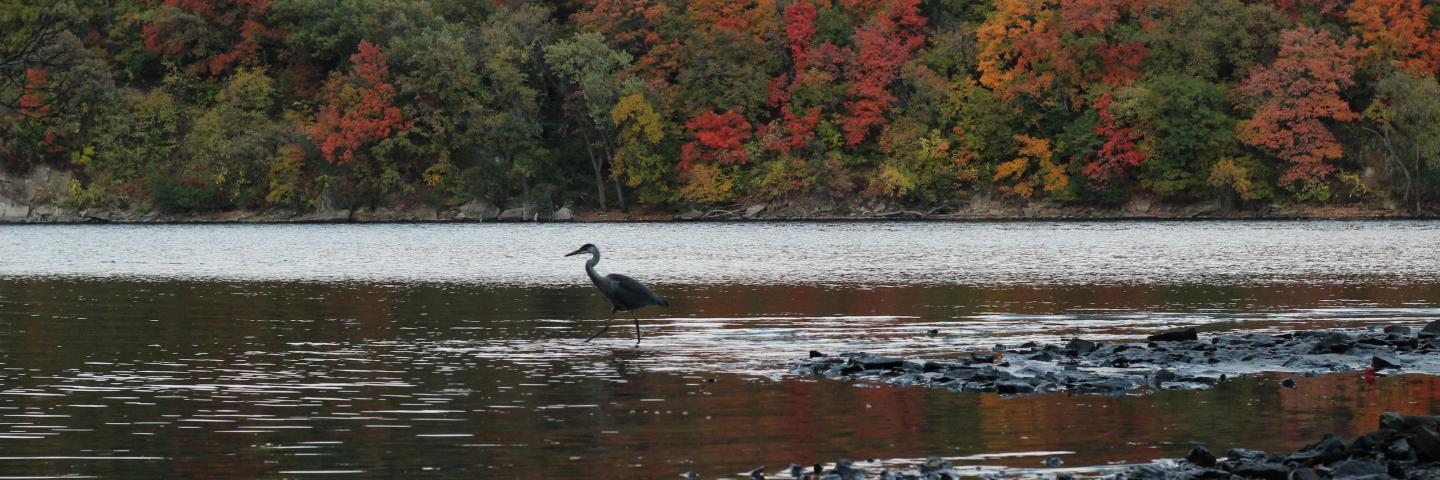
To improve the health of the Mississippi River Basin, including water quality and wildlife habitat, the Natural Resources Conservation Service developed the Mississippi River Basin Healthy Watersheds Initiative (MRBI).
On This Page
Through this Initiative, NRCS and its partners will help producers in selected watersheds in the Mississippi River Basin voluntarily implement conservation practices that avoid, control, and trap nutrient runoff; improve wildlife habitat; and maintain agricultural productivity.
These improvements will be accomplished through a conservation systems approach to manage and optimize nitrogen and phosphorous within fields to minimize runoff and reduce downstream nutrient loading. NRCS will provide producers assistance with a system of practices that will control soil erosion, improve soil quality, and provide wildlife habitat while managing runoff and drainage water for improved water quality.
The Initiative builds on the past efforts of producers, NRCS, partners, and other State and Federal agencies in the 13-State Initiative area to address nutrient loading in the Mississippi River Basin. Nutrient loading contributes to both local water quality problems and the hypoxic zone in the Gulf of Mexico. The participating states are Arkansas, Kentucky, Illinois, Indiana, Iowa, Louisiana, Minnesota, Mississippi, Missouri, Ohio, South Dakota, Tennessee, and Wisconsin.
2024 MRBI Sign-Up
NRCS accepts applications for MRBI on a continuous basis. We announce signup cutoff deadlines as funds become available. For Fiscal Year 2024, the first application cutoff date for new MRBI contracts was Nov. 3, 2023. The next application cutoff to batch and rank applications is April 5, 2024.
Videos
- USDA Video: Limiting Runoff From Nutrient Application (YouTube) - Sept. 16, 2011
- Nature Conservancy Videos
Iowa MRBI Project Areas
MRBI Success Stories
Learn more about the impact of MRBI through our success stories.
A Recipe for Success: Improving Water Quality in the Indian Creek Watershed
Voluntary conservation efforts focused in small watersheds can yield big results for locally important waters. See how NRCS, landowners, and partners are working together to improve water quality in Illinois.
Learn MoreStepping Up for a Cleaner Mississippi River
Meet Iowa's 2015 Soil Conservation Farmer of the Year Award recipient, Tim Smith, one of the many conservation farmers participating in a USDA program designed to reduce nutrient and sediment loading in the Mississippi River Basin.
Learn MoreReady to get started?
Contact your local service center to start your application.
How to Get Assistance
Do you farm or ranch and want to make improvements to the land that you own or lease?
Natural Resources Conservation Service offers technical and financial assistance to help farmers, ranchers and forest landowners.

To get started with NRCS, we recommend you stop by your local NRCS field office. We’ll discuss your vision for your land.
NRCS provides landowners with free technical assistance, or advice, for their land. Common technical assistance includes: resource assessment, practice design and resource monitoring. Your conservation planner will help you determine if financial assistance is right for you.
We’ll walk you through the application process. To get started on applying for financial assistance, we’ll work with you:
- To fill out an AD 1026, which ensures a conservation plan is in place before lands with highly erodible soils are farmed. It also ensures that identified wetland areas are protected.
- To meet other eligibility certifications.
Once complete, we’ll work with you on the application, or CPA 1200.
Applications for most programs are accepted on a continuous basis, but they’re considered for funding in different ranking periods. Be sure to ask your local NRCS district conservationist about the deadline for the ranking period to ensure you turn in your application in time.
As part of the application process, we’ll check to see if you are eligible. To do this, you’ll need to bring:
- An official tax ID (Social Security number or an employer ID)
- A property deed or lease agreement to show you have control of the property; and
- A farm number.
If you don’t have a farm number, you can get one from USDA’s Farm Service Agency. Typically, the local FSA office is located in the same building as the local NRCS office. You only need a farm number if you’re interested in financial assistance.
NRCS will take a look at the applications and rank them according to local resource concerns, the amount of conservation benefits the work will provide and the needs of applicants. View Application Ranking Dates by State.
If you’re selected, you can choose whether to sign the contract for the work to be done.
Once you sign the contract, you’ll be provided standards and specifications for completing the practice or practices, and then you will have a specified amount of time to implement. Once the work is implemented and inspected, you’ll be paid the rate of compensation for the work if it meets NRCS standards and specifications.

